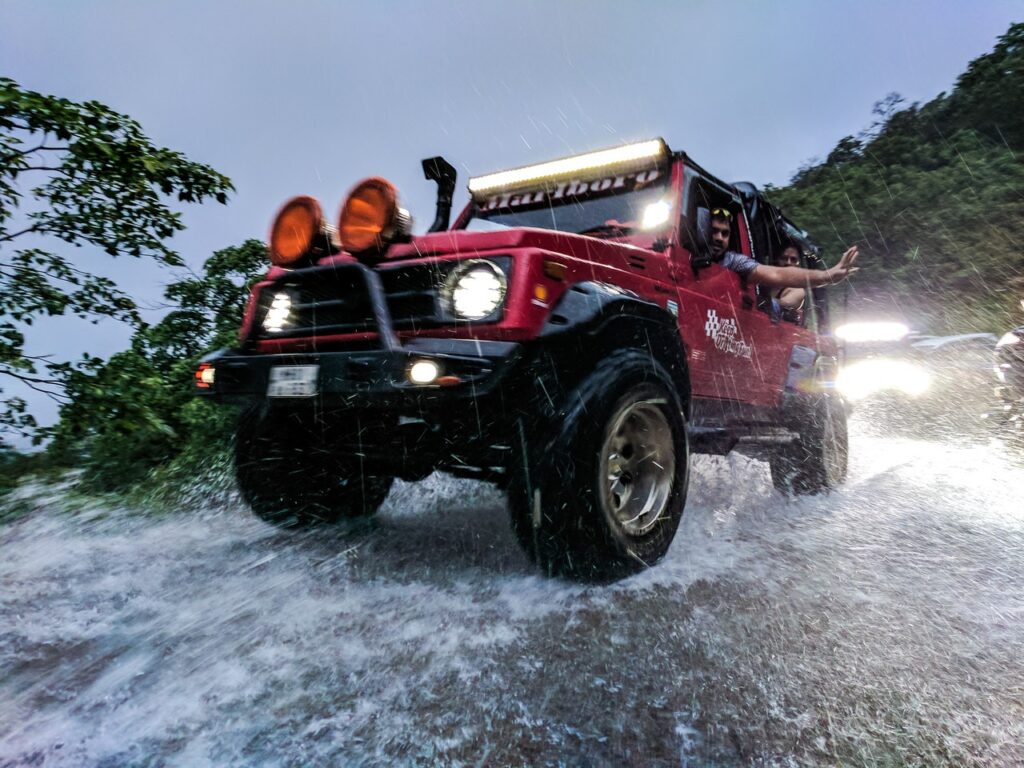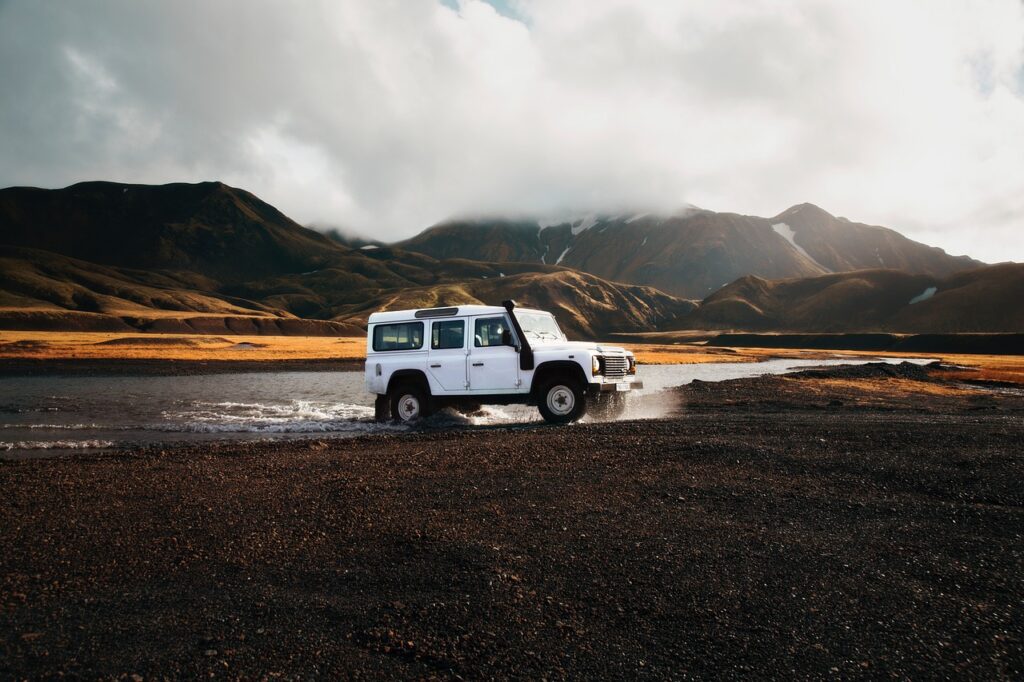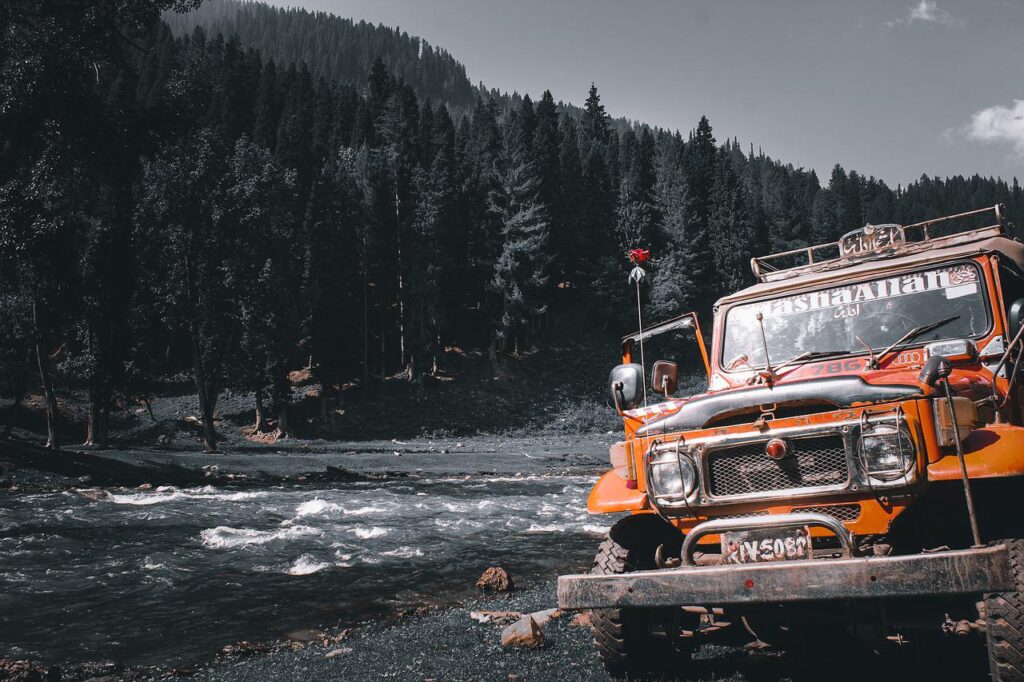If you’re new to four wheel driving and you have a passion for four wheel drive adventures, here are some basic tips and tricks that will be good to remember for your next trip.
Introduction – Four Wheel Driving
Not all four wheel drives, just like not all four wheel drivers are the same. If you’re reading this, you obviously have a passion for adventures involving four wheel drives and you may be new to the sport. 4WDs give access to the remote landscapes of the countryside, but also ensures a much safer journey than many other vehicles, assuming you’re familiar with the vehicle you’re using and you follow some basic tips and tricks.
What is a Four Wheel Drive?
The market for Four Wheel Drives is rapidly growing. Consumers are now more interested in four-wheel-drive cars, trucks, crossovers, and SUVs than before. In April 2020, 50.8% of models of newly bought vehicles were equipped with a four-wheel-drive system.
So, if you want to keep peace with this advancement and buy one for yourself, you ought to have in-depth knowledge about four wheel drives and their basics.
A four-wheel drive is the type of vehicle where the engine supplies energy and torque to all 4 wheels simultaneously. In normal two-wheel drive cars, the engine supplies traction to only one pair of wheels, either front or rear wheels.

A four wheel drive vehicle is capable of switching between two-wheel drive and four-wheel drive because of being equipped with a “transfer case“. This inter-switching can be done both automatically or manually.
Thus, it helps to get out of slippery and sticky holes, paves through slopes or inclined surfaces, and surfs through an uneven and stony path.
Advantages of Four-Wheel Drive Vehicles
● Can Be Driven on Any Road
Four-wheel drives improve traction and allow you to tackle difficult roads and scenarios. The large tires allow the vehicle to have more grip on the road to continue pace and stability.
● Safe
It’s higher than most vehicles so the driver has clearer visibility of the roads to anticipate upcoming dangers or challenges like slopes or potholes. Being more conscious about the roads lessens the chance of an accident.
● Spacious
Many models are broad, large, and have plenty of space. This space can be used for various purposes: especially to carry camping and trekking equipment.

Disadvantages of Four-Wheel Drive Vehicles
● Costly
Complexity of technology and extra parts (differentials, transfer cases, etc.) mean a higher price tag than many two-wheel drive vehicles.
● Large and bulky
Large, bulky vehicles often mean drivers have more difficulty finding parking spaces
● Excessive Fuel
The vehicle needs relatively more fuel because of the extra weight and power which results in “poor fuel economy” in many models.
“Gonna get me one of them Jeep Cherokees with the four-wheel drive, and go all over the whole country in it.”
Richard Laymon
No products found.
Four Wheel Driving – 10 Basic Tips and Tricks
Follow these basic tips and tricks for a safe, successful four-wheel drive adventure:
1. Pre-Plan the Route
Before embarking on any 4WD adventure, it’s always a good idea to take some time to plan your route. This way, you can avoid getting lost and identify any potential hazards ahead of time.
When planning your route, be sure to take into account the terrain, weather conditions, and your skills and experience. If you’re unfamiliar with the area, it’s a good idea to do some research and talk to locals who know the area well.
Once you have a general idea of the route you’d like to take, it’s time to start mapping out the details. Identify potential campsites, gas stations, and other points of interest along the way.
And if possible, try to get your hands on a detailed map of the area. With a little planning and preparation, you can ensure that your 4WD adventure is safe and enjoyable for everyone involved.

2. Make the Most of Your Hill Descent System
Hill Descent Control is a great addition to any 4×4 vehicle. It allows for swift hill descents on uneven terrain, without the need to use the brake pedal.
This technology is great for anyone who enjoys spending time off-road, as it can help to make the experience more enjoyable and safer.
In addition, Hill Descent Control can also be used in more everyday situations, such as when driving down a steep driveway or attempting to park on a slope.
Whether you’re an experienced off-roader or just looking for a little extra peace of mind, Hill Descent Control is worth considering.
3. Use Low Gear when appropriate
If you are off roading, be prepared for a steep incline or decline, big stone, or any other situation with reduced traction. On such occasions, low gear is recommended to avoid wheel slip and ensure maximum traction.
Brakes work hard when you are descending, sustaining speed, and dueling against gravity.
In a general situation, this stress can lead to brake failure if it’s overheated. But in low gear, the engine-braking system aids your brake to create a more efficient driving environment.
4. Low Tire Pressure
On imperfectly groomed pavement: the tires can bump and bounce if pressure is high. To avoid a tough and rough ride and maintain maximum traction: tires with less air pressure is recommended because more impact is absorbed and the weight is distributed on more surface, resulting in a better drive and more traction.
5. Water Crossing
Avoid driving in water that’s deeper than the center of the wheels. This may damage your engine transmission and/or front and rear axles. Also, check the depth of the water even if it’s a creek, and try your best not to drive into fast-flowing water.
6. Maintain Distance
For on-road driving, a gap of 3 seconds should be kept from the car in front. But on dirt roads, this chasm should be much more, for a comfortable and safe ride. It also decreases chance of sand and dirt flicking up onto your windscreen.
7. Trust the Updated Technology
Technology has come a long way in the past few decades, and that’s especially true for vehicles. Today’s vehicles are packed with high-tech features that can make them more capable than even the most experienced driver.
However, many people still approach these vehicles as if they’re driving a 50-year-old car. That can lead to problems because even the best technology can’t overcome poor driving habits.
So, if you’re lucky enough to be behind the wheel of a modern off-road vehicle, remember to take advantage of all the tech features at your disposal.
From there, you’ll be able to tackle even the most challenging terrain with ease.
8. Stay out of the spin zone.
While 4WD vehicles have a lot of advantages in terms of traction and stability, it’s important to be aware of the potential for spinning out if you’re not careful.
With four wheel drive systems, all four of the vehicle’s wheels are always receiving power from the engine, so it can be easy to get going too quickly and lose control.
That’s why it’s important to maintain a good grip on the road. When the roads are slippery, take extra care to avoid spinning out by braking gradually and steering smoothly. If you do find yourself starting to spin, ease off the accelerator and turn into the skid.

9. Prepare and Know Your Vehicle
Check your fuel tank, tires, underbody protection, lock system, steering wheel, and all the mechanical instruments installed. Carry emergency types of equipment and be familiar with your car, particularly its weight limit.
“Yours can go fast. Mine can go anywhere.”
UNKNOWN
No products found.
10. Resist and Accept
When you are turning on an uneven road, you might feel recurring forces and jerks. This happens because the front wheels fight the rotational force coming from the driveshaft for synchronization. Avoid involving four wheel drive on a high traction surface for a long time. It possesses serious threats to drive-train components.
Things You Should Avoid While Four Wheel Driving
- Don’t carry more weight than your vehicle can handle. Be aware of your weight limit.
- Avoid aggressive or obnoxious behaviour on the road.
- Try to protect the environment, and avoid unnecessary pollution
- Avoid relying on your brakes more than your gears.
- If you are stuck, don’t mush the throttle.
- You shouldn’t try to put 4LO while forwarding through slippery roads. However, you can use it on icy roads.
Conclusion – Four Wheel Driving
Four Wheel driving can be a great way to explore the great outdoors and get off the beaten track. If you’re new to four wheel driving, make sure you take these tips into consideration and the most important thing is that you know your own vehicle and what its capabilities and limitations are.
If you have some tips to add here, let us know!
